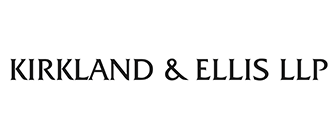The US Supreme Court has ruled in favour of Google in its software copyright dispute with Oracle.
Background
Google copied the organisational structure and “roughly 11,500” lines of declaring code from Oracle’s Java SE application programming interface (API) to build the Android software platform for mobile devices.
Oracle sued Google in the Northern District Court of California (in 2012) for patent and copyright infringement, seeking billions of dollars in damages, but later dropped the patent claim. For the copyright action, Google argued that it copied what was necessary to make it easier for programmers to create new software/applications that work on the Android platform and therefore the fair use doctrine applied.
There were a number of court judgments against/for the parties since 2012. The latest judgment was the Federal Circuit’s decision (in 2018) which held that Oracle’s API is protected under copyright law and Google’s copying was not fair use (NB the jury found in favour of Google on fair use). The Federal Circuit sent the matter back to the District Court for a trial on damages.
Google appealed to the Supreme Court seeking clarification on whether copyright law protects the parts of the API copied and if it can rely on the fair use defence. The court also had to clarify whether judges can review the facts on fair use determined by the jury and ask the “ultimate legal question” on fair use.
Flexible fair use for computer programmes
In its opinion, published on March 5, the Supreme Court ruled that Google’s use of the API constituted fair use. However, the court did not clearly answer the question on copyright protection for the declaring code. Justice Breyer delivered the court’s opinion, which was endorsed by Roberts, Sotomayor, Kagan, Gorsuch, and Kavanaugh JJ (“the majority”). Thomas and Alito JJ disagreed.
In the opinion, the majority explained the make-up and nature of Oracle’s API; the law on copyright protection for computer programmes; the law on fair use; and how the courts and the jury assess fair use. On the issue of copyright protection for the declaring code, the judges remarked: “In our view ... the declaring code is, if copyrightable at all, further than are most computer programs (such as the implementing code) from the core of copyright.”
The judges said that the fair use doctrine should be “flexible” for computer programmes, which should be treated differently because they are not the same as other copyrightable works such as films and books. They were also mindful of the need to strike the appropriate balance between IP rights and the public interest. They noted: "[F]air use can play an important role in determining the lawful scope of a computer program copyright, such as the copyright at issue here… [I]t can carry out its basic purpose of providing a context-based check that can help to keep a copyright monopoly within its lawful bounds.”
The judges observed that Google only copied what was required (“only 0.4 percent of the entire API”) to create something new (“transformative use”) and allow users to add value by creating new software programmes for the Android platform.
They also considered the impact of its ruling on Oracle’s business, Android users and the software industry. They believed that allowing Oracle to enforce its copyright in this dispute would “interfere with, not further, copyright’s basic creativity objectives” and “risk harm to the public”. The majority therefore held that Google’s use constituted fair use.
Jury can’t resolve the legal question
All the judges, including Thomas and Alito JJ, agreed that the fair use defence is for the judge to decide as a matter of law. “The fair use question is a mixed question of fact and law. Reviewing courts should appropriately defer to the jury’s findings of underlying facts, but the ultimate question whether those facts amount to a fair use is a legal question for judges to decide de novo…. The “right of trial by jury” does not include the right to have a jury resolve a fair use defense.”
Commentary
First, the majority’s opinion focused on the fair use question and avoided the question on whether copyright protects the API’s declaring code. The judges emphasised that they have not changed the law on fair use.
In his dissenting opinion, Justice Thomas held that the copyright law on computer programmes covers the declaring code and it is wrong to separate parts of the API in a way that “makes that code generally unworthy of protection”. After his analysis of the four factors on fair use, Thomas J concluded that Google’s copying was not fair use.
The majority’s judgment is good news for software industry players that “reimplement a user interface”. As the judges noted: “[T]he reimplementation of a user interface allows creative new computer code to more easily enter the market.” It is likely to embolden API users to assert the fair use defence if sued for copyright infringement.
On the other hand, originator API developers will feel that the current case law is not on their side and they may well find it difficult to enforce and monetise their creation. Nonetheless, each case will turn on its own facts.
The Supreme Court will have to provide a clear answer in the future on copyright protection for different parts of an API.
Read the opinion here.
Legal representatives
E Joshua Rosenkranz of Orrick Herrington & Sutcliffe argued for Oracle.
Thomas C Goldstein of Goldstein & Russell argued for Google. Other law firms that have advised Google on this dispute include Paul Weiss Rifkind Wharton & Garrison and King & Spalding.
Several interveners and law firms were also involved in this case.




